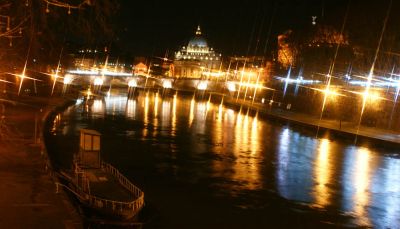“Vita di Paese” has been focusing, for the last five years, on stories related to little, often remote Italian villages and towns, their lifestyles and traditions as well as their people. However, with this month’s topic of “resilience and traditions,” it seems reasonable to look at the Eternal City (fig. 1). A city which has certainly gone through innumerous and deep tragedies and difficulties over its thousand years’ history, yet always surviving and gaining strength and determination to go forward. Indeed, Roma is a city like no other thanks to her historic events and famous features. The strong presence of the Vatican State (fig. 2) within Rome’s walls has created, for centuries, often a rather difficult “cohabitation,” related to unique political and financial conditions. However, this reality has generated legendary artistic and architectural achievements (fig. 3) reflective of the Church presence and influence throughout the centuries.
A little-known area of Rome is the Jewish Ghetto (fig. 4), one of the oldest in the world, dating back to the 16th century. The area suffered enormous losses of lives and property during the Fascist-Nazi period, nevertheless surviving and again prospering today into a desirable site to visit thanks to its many shops (fig. 5) and restaurants (fig. 6) where often the traditional “romanesca” cuisine may be appreciated. The Ghetto is located near the historic center, across the Vatican and along the Tevere River (fig. 7), best visited on foot and walking around the many “piazze” (fig. 8) and the cobblestone “stradine and vicoli” (fig. 9) often with characteristic names. It remains extremely busy with traffic and visitors until very late at night. Bicycles (fig. 10) are again very popular among the locals, a good way to deal with traffic and parking issues as well as the extra calories added by the irresistible trattorias’ temptations… buon appetito!
https://www.lagazzettaitaliana.com/photo-exhibit/8429-the-eternal-city#sigProId2f9832c53c




